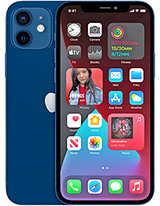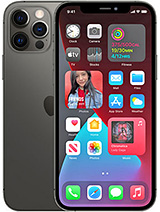Apple iPhone 12 Pro vs iPhone 12: Ultimate Camera Comparison! By #GNTECH
Hi guys this is danish here from GN tech, and we are checking out the iPhone 12 and the iPhone 12 Pro. This is what the audio would sound like if we were on the mics with uh background noise around me, but uh. Let's jump right into the pictures and videos that we've taken to compare the iPhone, 12 and 12 pro before getting to those samples, though here's a quick round up of each phone's camera specifications the wide, as well as the ultra-wide 12 megapixel cameras on both the smartphones are identical with the pro having an extra 12, megapixel telephoto lens and a 3d LIDAR scanner for depth. Perception. Aside from that, you also get a Bobby vision cap at 30 fps on the iPhone 12, which is something that goes all the way up to 60 fps on the iPhone 12 Pro the front of the cameras are identical, both the same even identical to last year's camera hardware, with the phones being so similar. Let's address the similarities.
First, these pictures are taken in downtown Dubai, and they look almost identical with a matching color science and detail to go with it. Even with the ultra-wide angle, photos we've taken to further analyze, we've cropped into the ultra-wide sample of Burj Khalifa, and the differences are really hard to tell apart likewise selfies, as well as portrait selfies from both the iPhone 12 Pro and iPhone.12 are near identical too changes start to creep up when using the telephoto lens for things like zoom, as well as portraits at 2x zoom. Despite the iPhone 12, not having a dedicated telephoto lens, it does quite a good job, but the effect of the telephoto lens starts to show up at 5x zoom, where the picture starts to lose a bit more detail on the iPhone 12. It's worth noting that this is the maximum zoom range on the iPhone 12. So 5x is the maximum cap, whereas on the iPhone 12 Pro, you can go all the way up to 10x, and this still retains a good level of detail.
In fact, cropping into the iPhone 12 image at 5x shows how much better the iPhone 12 Pro does with sharpness and detail. In this case, the other area where differences lie are portraits with a dedicated telephoto lens. The 12 pro defaults to a more cropped in view, whereas the iPhone 12 just uses the wide lens and blurs the background. Things like edge detection will come off much better on the iPhone 12 Pro thanks to its depth, perceiving LIDAR sensor as well, especially with this image. Look at how the edges of the camera are blurred out on the iPhone 12 towards the rear and the right side, while the iPhone 12 Pro does a far better job with nighttime photos again, we'll start off with the similarities, because they seem to be much more than the actual differences photos with night mode are similar and here's a sample throwing in the iPhone 11 Pro where in decent lighting conditions.
It's really hard to tell the photos apart, but in darker conditions like here, you can see how the 12 series is managing to capture a bit more detail in the darker regions of the photos, probably thanks to its improved f 1.6 aperture, the real differences between the 12 pro and 12. On the other hand, they seem to vary, and we think this is due to human error and natural tendencies of moving slightly when taking photos and not so much on the core processing technology behind the smartphone cameras. Something new this year for the 12 series is night mode on all the cameras, including the ultra-wide angle lens. In this case, you see that the 12 pro is doing a slightly better job than the 12, but both of them do in fact do better than the iPhone 11 Pro, which didn't have a night mode altogether for its ultra-wide angle. Samples here are a few more samples with the ultra-wide angle, night mode and then moving on to selfies during pitch black.
Here, too, you do have a night mode, but it seems like the iPhone 12 series is night mode just needs a lot of work when it comes to the front facing camera, with pictures coming out less than ideal and the mode forcing you to use the front flash something that we didn't expect. We've definitely seen better night mode implementations from the front cameras on other smartphones, and they seem to be doing much better than what the iPhone 12 series can do. So perhaps future software updates can rectify this issue. Nonetheless, we'll end on a sample that does show some noticeable differences between these two phones during the night, which is a portrait sample where the 12 pro can actually enable night mode for portraits, resulting in a brighter looking image, which we think may come in handy for darker situations, although in this case it doesn't seem to be as useful and doesn't seem to be doing a far better job than the 12. Moving to videos.
The underlying theme of this whole video camera comparison just seems to prevail with more similarities than differences. We've overlaid samples of 1080p 30fps footage, then there's some 1080p 60fps footage to go with it as well. There's also a 1080p 60fps, ultra-wide angle, camera sample to judge coverage, detail and stability, which doesn't seem to be massively different now before moving forward. Here's a sample of 4k 30fps footage with no Bobby vision, enabled on both devices and now a 4k 30 fps sample with Dolby Vision, and given that Bobby vision at 60 fps is the major differentiator between the two smartphones. We thought we'd compare these two as well: Bobby vision at 4k, 30 and Dolby Vision at 4k 60fps.
Although the difference here is very, very, very minimal, the only slight difference is smoother footage coming from the iPhone 12 Pro given the higher refresh rate where there is a difference, is at 4k 60fps on the 12 pro versus 4k 60fps on the 12, where the 4k 60fps footage from the 12 pro actually films with Bobby vision, whereas the 60fps footage coming from the iPhone 12 cannot so the iPhone 12 just shows colors that seem to be brightened up, whereas on the iPhone 12 Pro you get much more natural tones, and you can definitely see that from this sample now for good measure. Here's another sample of the same where pretty much the exact same story continues, but we just wanted to throw it in for a difference in scene, a difference in scenario. Finally, we've got some ultra-wide angle, samples at 4k resolution with 30 fps, as well as with 60 fps settings. So you have an idea of how these phones or camera smartphones differ side by side. Finally, wrapping up with this camera comparison.
We've got similar samples, but this time during low light, which goes to show how similar the imaging technology on both the iPhone 12 Pro and iPhone 12 from this year, really is even at 4k 60 fps. During low light, the difference obtained from Bobby vision drops and to a general consumer. It is really difficult to figure out which phone is which, especially also because of how much sharing we do on social media platforms and the quality losses that come associated with that, but that wraps up our look at both the Apple iPhone 12 Pro and the iPhone 12 from a camera perspective. Let us know what you think about the differences down in the comments and make sure to like and subscribe for more videos coming up thanks for watching- and this was vape, and I'll- see you in the next one adios.
Source : #GNTECH


























